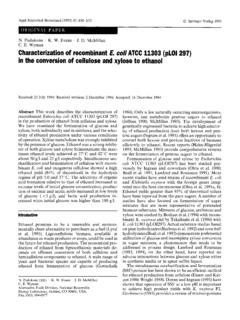Transcription of Fighting Poverty in the U.S. and Europe: A World …
1 Fighting Poverty in the Fighting Poverty in the and europe : and europe : A World of DifferenceA World of DifferenceAlberto Alberto AlesinaAlesinaand Edward L. Glaeserand Edward L. GlaeserOxford University Press, 2004 Oxford University Press, 2004 Core QuestionsCore QuestionsnnWhy do European Nations give so much more Why do European Nations give so much more to their poor than the their poor than the are tax rates so much more progressive?Why are tax rates so much more progressive?nnWhy is there so much more allegedly proWhy is there so much more allegedly pro--labor labor regulation? regulation? The question is NOT why the size of government is larger in europe than in the question is NOT whether redistributive effort is successful or not and at what about RedistributionFacts about RedistributionnnEconomic Causes of RedistributionEconomic Causes of RedistributionnnPolitical Institutions and RedistributionPolitical Institutions and RedistributionnnEndogeneityEndogeneityof Institutionsof InstitutionsnnRacial Heterogeneity and RedistributionRacial Heterogeneity and RedistributionnnIdeology and RedistributionIdeology and Redistribution-Size and composition of government spending-Pension systems-Taxation-Labor market regulationThe Level of RedistributionThe Level of KingdomUnited Continental StatesUnited StatesWages Wages and and salariessalariesGoods Goods and and ServicesServicesGross
2 Gross investmentinvestmentSocial Social benefits benefits and other and other transferstransfersbbSubsidiesSubsidiesCo nsumptionConsumptionTotalTotalaaCountryC ountryPercent of GDPP ercent of GDPT able 1. Composition of General Government Expenditure, 2000 Table 1. Composition of General Government Expenditure, 2000 Source: Authors calculations based on data from OECD Economic Outlook Database (No. 71, Vol. 2002, Release 01), June Totals also include interest payments and some categories of capital Includes social Simple average for Austria, Belgium, Denmark, Finland, France, Germany, Greece, Italy, Netherlands, Norway, Portugal,Spain and KingdomUnited Continental StatesUnited StatesOtherOtherccHealthHealthbbUnemploy ment Unemployment and labor and labor market market programsprogramsFamilyFamilyaaOldOld--ag e, age, disability disability and and survivorssurvivorsTotalTotalCountryCount ryPercent of GDPP ercent of GDPT able 2.
3 Government Expenditure on Social Programs, 1998 Table 2. Government Expenditure on Social Programs, 1998 Source: Authors calculations based on data from OECD Social Expenditure Database 1980-1998 (3rdEdition), Includes cash benefits and in kind Includes, among other things, inpatient care, ambulatory medical services and pharmaceutical Includes occupational injury and disease benefits, sickness benefits, housing benefits and expenditure on other contingencies (both in cash or in kind), including benefitsto low-income Simple average for Austria, Belgium, Denmark, Finland, France, Germany, Greece, Italy, Netherlands, Norway, Portugal, Spain and poor old getproportionallymuchmore thanthe richand thiseffectisstrongerin Europethanin the USFigure 1: Difference in marginal tax rates, in %, between the US and EU15 (excluding Denmark)The difference equals the US marginal tax rate minus the unweighted average European marginal rate for each income of average production worker wageTable3 Labormarketsin the US and in Union (1)(1) ((yearsyears) ) 19891989--9494ratio (%)ratio (%)19891989--9494((weeksweeks) ) 199219921990199019851985--9393 Benefit Benefit durationdurationBenefit Benefit replacementreplacementMinimum Minimum annualannualleaveleaveEmploymenEmploymen ttProtectionProtectionLaborLaborstandard sstandardsSource: Nickelland Layard(1999) and Nickell(1997)1.
4 Austria, Belgium, Denmark, Finland, France, Germany, Ireland, Italy, Netherlands, Portugal, Spain, Swedenand UK. The Timing of the Welfare StateThe Timing of the Welfare StatennAlthough the difference widens in the 1980s, it Although the difference widens in the 1980s, it is not just a modern not just a modern is it particularly postNor is it particularly post-- World War IIWorld War IInnBut it isnBut it isn t really there in the really there in the turning point appears to be around 1920. The turning point appears to be around 1920. Figure : Government expenditure on subsidies and transfers (% of GDP) 1870-1998 (obtained from Table )05101520251870a19371960197019801998 DifferenceEuropean UnionUnited States* Redistribution from the rich to the poor is much more extensive in europe . * Some disadvantaged categories (sick, elderly, large families) also have protection in the US (although less than europe ), very few transfers to the poor per se in the US.
5 SummaryPrivate charityCharity contributions are much larger in the US than In europe : charity per capita in the US in 2000 is $ 691 per capita, against 141 for UK and 57 for europe as a enough to make up for differences in Government spendingExplanations:*Charity as partial substitute for public welfareAmericans don t appear to be less Altruistic than Europeans*You can choose to whom you give charity,but not how your taxes are spentPossible explanations- economic explanations-political explanations -behavioral, sociological explanationsWhyEuroperedistributemore?Ec onomic Explanations1)The pre tax distribution of income: more pre tax inequality, more demand for redistribution in a does not work: pre tax inequality much higher in the US than in is in the US, in europe . In the US top 20 per cent gets of pre tax income, in europe per seems to have been true for a long time, even pre World War I.
6 2) Variability of income and opennessMore open economies have more variability of income and therefore government transfers are needed to does not work: very weak cross country evidence. The US GDP is much more volatile than European countries Economicvariabilityin the US and europe (Standard deviations) (1)rate (1) manufacturing Total manufacturing GDP growthgrowthEU15EU15 USUSS ampleSampleRangeRangeSeriesSeriesGreater Income Mobility Greater Income Mobility within the the is not entirely obvious what parameter income It is not entirely obvious what parameter income mobility actually relates to and why that mobility actually relates to and why that parameter influences influences it is just variability, then this suggests that high If it is just variability, then this suggests that high mobility means that American society is more mobility means that American society is more equal than it seems because of than it seems because of it relates to the marginal returns to effort Maybe it relates to the marginal returns to effort and the social costs of distorting the social costs of distorting Mobility and RedistributionIncome Mobility and RedistributionnnProbability the right reason is that income Probability the right reason is that income mobility is used to vilify the poor, mobility is used to vilify the poor, anyone anyone can get rich as long as they work hard in the can get rich as long as they work hard in the land of opportunityland of opportunity if you arenif you aren t rich, you dont rich, you don t t deserve anything.
7 NnSo this would relate to altruism towards the So this would relate to altruism towards the return to this in the ideology of redistributionI return to this in the ideology of redistributionFacts about Income Mobility Facts about Income Mobility in the and Europein the and EuropennExtensive Controversy (Fields and Ok)Extensive Controversy (Fields and Ok)nnMobility Cross Quintiles or Quartiles is the Normal Mobility Cross Quintiles or Quartiles is the Normal Measurement Measurement nnSome debate about using occupations or income or Some debate about using occupations or income or schoolingschoolingnnWithin person vs. across generationsWithin person vs. across generationsModern EvidenceModern EvidencennGottschalk and Gottschalk and SpolaoreSpolaore(US/Germany)(US/Germany) nn31 percent of middle quintile Germans and 34 31 percent of middle quintile Germans and 34 percent of middle quintile Americans moved up over percent of middle quintile Americans moved up over 10 years10 yearsnn12 percent of middle quintile Americans and 16 12 percent of middle quintile Americans and 16 percent of middle quintile Germans drop to bottom percent of middle quintile Germans drop to bottom quintilquintilnnGreater immobility of poor: 60 percent of bottom Greater immobility of poor.
8 60 percent of bottom quintile in the and 43 percent of bottom quintile quintile in the and 43 percent of bottom quintile in Germany stay in that quintilein Germany stay in that quintileChecchiChecchi, , IchinoIchinoand and RustichiniRustichini(US/Italy)(US/Italy) nnInterInter--generational mobility based on occupationgenerational mobility based on occupationnnIn Italy 11 percent of middle quintile fathers In Italy 11 percent of middle quintile fathers have top quintile sonshave top quintile sonsnnIn the this number is 14 percentIn the this number is 14 percentnnIn Italy, 21 percent of fathers in the bottom In Italy, 21 percent of fathers in the bottom quintile have sons also in that quintilequintile have sons also in that quintilennIn the , that number is 25 percentIn the , that number is 25 percentnnMiddle income more mobile in , bottom Middle income more mobile in , bottom quintile less so.
9 Quintile less so. Evidence from 19 Evidence from 19ththCenturyCenturynnPesenPesen(1974)(1 974) 90 percent of 1990 percent of 19ththcentury elites century elites came from wellcame from well--off familiesoff familiesnnThernstromThernstrom(1973) finds 40 percent of working class (1973) finds 40 percent of working class parents sire children who riseparents sire children who risennKaebleKaeble(1985) summarizes and finds percent (1985) summarizes and finds percent mobility in the US, same in Scandinavia, slightly lower mobility in the US, same in Scandinavia, slightly lower in Austria (10 percent) and England ( percent)in Austria (10 percent) and England ( percent)nnBut Long and But Long and FerriaFerria(unpublished) show starker (unpublished) show starker differencesdifferences3) Efficiency of the tax systemTax system is more efficient in europe , costs of collecting taxes lower.
10 Easier it is for the government to levy high taxesto Value-Added Tax is the one pieceof evidence for this. Very weak evidence of this effect. European tax systems are very different from each other. Tax evasion is probably lower in the US than in continental europe (surveyMeasures confirm this, but ..)Political Explanations1)The electoral systemsProportional electoral systems are associated with larger transfer spending programs in OECD countries. The US and the UK have two of the least proportional electoral systems. Northern European countries have very proportional Political Roots of The Political Roots of the Welfare Statethe Welfare StatennProportional Representation vs. Proportional Representation vs. MajoritarianismMajoritarianismnnRepresen tation by Land Area, not votes (Senate)Representation by Land Area, not votes (Senate)nnChecks and Balances (Senate, House vs.















